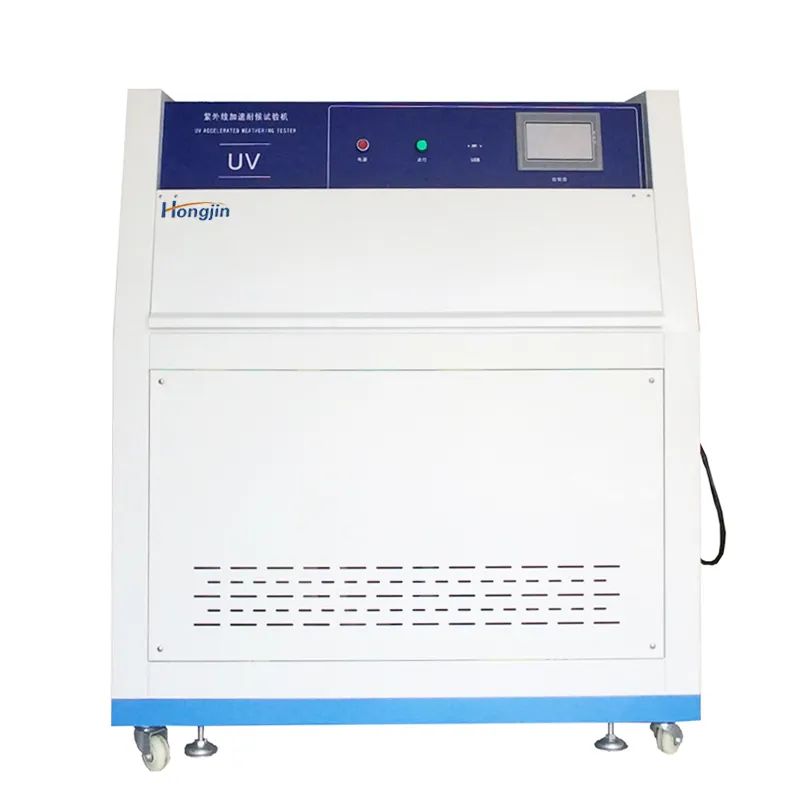We use different types of lamps and spectra for different exposure tests. UVA-340 lamps can well simulate the short wavelength UV spectral range of sunlight, and the Spectral energy distribution of UVA-340 lamps is very similar to the spectrogram processed at 360nm in the solar spectrum. UV-B type lamps are also commonly used for accelerating artificial climate aging test lamps. It damages materials faster than UV-A lamps, but the wavelength output is shorter than 360nm, which can cause many materials to deviate from actual test results.
In order to obtain accurate and reproducible results, Irradiance (light intensity) needs to be controlled. Most UV aging test chambers are equipped with Irradiance control systems. Through feedback control systems, Irradiance can be continuously and automatically monitored and accurately controlled. The control system automatically compensates for insufficient illumination caused by lamp aging or other reasons by adjusting the power of the lamp.
Due to the stability of its internal spectrum, fluorescent ultraviolet lamps can simplify irradiation control. Over time, all light sources will weaken with age. However, unlike other types of lamps, the Spectral energy distribution of fluorescent lamps does not change over time. This feature improves the reproducibility of experimental results, which is also a significant advantage. Experiments have shown that in an aging test system equipped with irradiation control, there is no significant difference in output power between a lamp used for 2 hours and a lamp used for 5600 hours. The irradiation control device can maintain a constant intensity of light intensity. In addition, their Spectral energy distribution has not changed, which is very different from xenon lamps.
The main advantage of the UV aging test chamber is that it can simulate the damage effect of outdoor humid environments on materials, which is more in line with the actual situation. According to statistics, when materials are placed outdoors, there is at least 12 hours of humidity per day. Due to the fact that this humidity effect is mainly manifested in the form of condensation, a special condensation principle was adopted to simulate outdoor humidity in the accelerated artificial climate aging test.
During this condensation cycle, the water tank at the bottom of the tank should be heated to generate steam. Maintain the relative humidity of the environment in the test chamber with hot steam at high temperatures. When designing a UV aging test chamber, the side walls of the chamber should be actually formed by the test panel, so that the back of the test panel is exposed to indoor air at room temperature. The cooling of indoor air causes the surface temperature of the test panel to decrease by several degrees compared to steam. These temperature differences can continuously lower the water to the test surface during the condensation cycle, and the condensed water in the condensation cycle has stable properties, which can improve the reproducibility of experimental results, eliminate sedimentation pollution problems, and simplify the installation and operation of experimental equipment. A typical cyclic condensation system requires at least 4 hours of testing time, as the material typically takes a long time to become damp outdoors. The condensation process is carried out under heating conditions (50 ℃), which greatly accelerates the damage of moisture to the material. Compared with other methods such as water spraying and immersion in high humidity environments, condensation cycles conducted under long-term heating conditions can more effectively reproduce the phenomenon of material damage in humid environments.
Post time: Jul-26-2023

